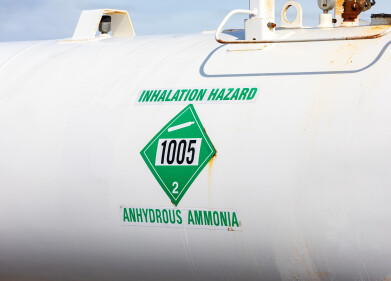Hydrogen fuel
What Are Fossil Fuel Subsidies?
May 28 2015
According to World Bank chief Jim Yong Kim, the world’s poorest countries are bearing “the boot of climate change on their neck.” While in low and middle-income countries the wealthiest 20% of the population enjoy lucrative fossil fuel subsidisations, the poorest 20% receive six times less support.
The solution? Abolish fossil fuel subsidies and introduce carbon tax in a bid to discourage the exploitation of oil, gas and coal. To fast-track reform Kim has put forward a five point plan designed to minimise carbon emissions and slow the effects of climate change. “We need to get rid of fossil fuel subsidies now,” he says.
To give you a better idea of the issues at hand and the proposed solutions on the horizon we’ve put together a guide covering everything you need to know about fossil fuel subsidies.
What’s the problem?
Kim maintains that the efforts by governments to actively increase the use of oil, coal and gas by offering manufacturers and consumers taxpayer funded subsidies is insanity. Every year, governments across the globe allocate an estimated £680 billion to subsidising fossil fuels. In the US alone subsidies can hit over US$52 billion a year, and that’s not including the environmental and health costs associated with the fossil fuel industry. According to Kim, “Fossil fuel subsidies send out a terrible signal: burn more carbon.”
What is the definition of fossil fuel subsidies?
Across the globe governments are offering incentives that lower the cost of fossil fuel energy production. In turn, this raises the price that energy producers receive for their resources, and lowers the price that consumers are asked to pay. These actions are referred to as fossil fuel subsidies.
What form do these ‘actions’ take
One of the most common forms of fossil fuel subsidies are tax breaks offered on production. Giveaways are also popular, as are loans, favourable rates, purchase requirements, price controls and other incentives.
Who receives the subsidies?
The biggest recipients of fossil fuel subsidies are major oil companies such as BP, Exxon, Chevron, Shell and ConocoPhillips. Independent oil companies also reap the benefits of government subsidies, with groups such as Occidental, Amerada Hess, Marathon and Murphy Oil all cashing in on the breaks.
Taxpayers fund subsidies AND additional public costs
As well as forking out for government subsidies offered to oil and gas companies, taxpayers are also forced to bear the brunt of additional public costs associated with fossil fuels. For example, in 2009 the National Academy of Sciences revealed that burning fossil fuels costs US taxpayers an estimated US$120 billion per year in health costs. A minimum of US$1.6 trillion is allocated to site maintenance, new vehicles and fuel while US$10.5 to US$500 billion annual budget is dedicated to the defense of overseas oil interests. Not to mention the environmental and economic costs of climate change that are impossible to estimate.
As the world develops an increasing awareness for the need to combat climate change, fossil fuel subsidies seem to have landed themselves a one way ticket to cessation.
If you’d like to read more about oil giants Shell and BP, read the following article: Is Shell or BP Investing in Green Energy?
Digital Edition
PIN 26.1 Feb/Mar 2025
March 2025
Analytical Instrumentation - Elemental Analysis for Quality and Process Control at Refineries, for Lubricants and Wear Metals in Engine Oils - Synthetic Lubricants: New Developments - Scaling...
View all digital editions
Events
Apr 08 2025 Birmingham, UK
Apr 08 2025 Kielce, Poland
Apr 08 2025 Ravenna, Italy
Apr 08 2025 Southampton, UK
Apr 08 2025 London, UK



















